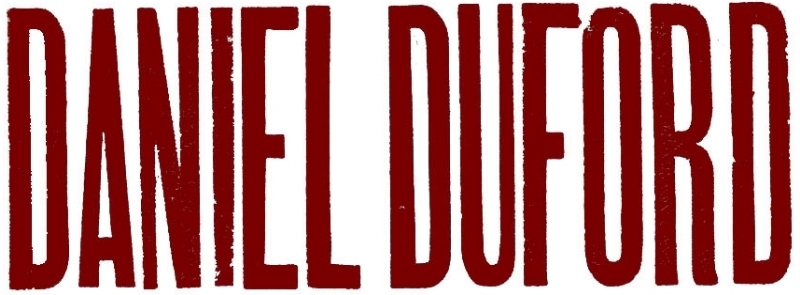Daniel Duford is an artist, writer and teacher. His work tells stories drawn from North American history and mythology. He is a 2019 John Simon Guggenheim Fellow, a 2010 Hallie Ford Fellow and a recipient of a 2012 Art Matters Grant. His murals and public art can be found throughout Portland. His books include John Brown's Body, The Unfortunates Graphic Novel, The Naked Boy and The Green Man of Portland. His work has been shown at MASS MoCA, The Atlanta Center for Contemporary Art, Maryhill Museum, Bellevue Arts Museum, Clay Studio, The Boise Art Museum, Museum of Contemporary Craft, PICA and The Art Gym at Marylhurst University. Residencies include MacDowell, Crow's Shadow Art Center and Ash Street Project. His writing has appeared in High Desert Journal, Parabola, Artweek, ARTnews, The Emily Dickinson Award Anthology, The Organ, The Bear Deluxe, Ceramics Monthly, Ceramics: Technical and Ceramics: Art and Perception. His work has been reviewed by The New York Times, The Village Voice, New York Press, The Albany Times Union, The Oregonian, Sculpture Magazine, Art Papers, Artweek, The Willamette Week and the Portland Mercury. He is currently Visiting Professor of Art at Reed College and Creative Director at Building Five in Portland, Oregon.
statement
Here’s the central image of my artistic practice– an enormous tree growing out of a half-buried storage jar. The roots have cracked the walls of the submerged pot and suck up nutrients from deep in mythic and historic earth. The disparate branches unite at the nubby, gnarled trunk. The jar itself is burnished by age with fissures filigreed up to the lip from the cracked belly. The clay for the jar was dug a long time ago nearby in a dry riverbed and fired by who knows who in a crude wood-burning kiln. The tree is a maypole, boundary marker, axis mundi and a lynching tree. I use blunt materials to tell stories. I make temporary heroic murals, throw pots, draw comics and build large scale, unviable ceramic monuments. The dendritic nature of my practice fans out from American mythology and folklore. In comics, narrative is understood through a sequence of panels. The space between the panels (the gutter) is filled in by the mind of the reader. What if the gutter were three-dimensional? How do we receive our stories? Mostly, we receive them in fragments. Like the broken pottery of a lost culture, we infer, we contextualize and we filter those fragments through our own beliefs and biases. The meanings are fluid. My stories generate paintings, public sculpture, books, installations and performances.
The Bees Made Honey, 2012, woodcut print, 20 by 30 inches


